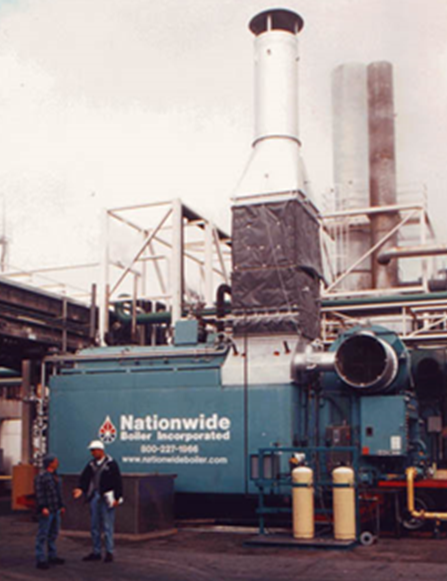The burner is the key equipment component for combustion control systems, providing the heat required for a boiler to convert water into steam. Ideally, a burner should achieve the highest degree of combustion efficiency with the lowest possible excess air. In this month’s edition of Boiler Basics 101, we will discuss the importance of burners and how they fit into the overall picture within the boiler system.
An industrial burner provides a basic function with a simple concept: it mixes fuel and air together to create combustion. Burners can be fired on various types of fuel but the most common utilized are natural gas, oil, propane and coal. In recent years, facilities have moved away from the use of coal to a more efficient and cleaner fuel like natural gas.
Regardless of the type of fuel used, the burner must perform five functions:
- Deliver fuel to the combustion chamber
- Deliver air to the combustion chamber
- Mix the fuel and air
- Ignite and burn the mixture
- Remove the products of combustion
Complete combustion occurs when all combustible elements and compounds of the fuel are entirely oxidized. However, with complete combustion comes harmful byproducts of combustion, including NOx and CO.
The amount of NOx and CO generated depends greatly on the burner design as well as the fuel fired. Burners with uncontrolled NOx may produce 60 ppm or more. Low NOx burners are the current standard and typically produce NOx of 30 ppm. Ultra-low NOx designs have been developed but are limited to firing on natural gas or propane. These types of burners will reduce NOx emissions to as low as 5 ppm to meet strict environmental requirements that are now common in certain parts of the country. If further NOx reduction is required, Nationwide Boiler’s CataStak™ SCR system can be utilized in conjunction with a low NOx burner.
The right burner design, along with proper combustion controls, will maximize the efficiencies of your boiler system. And as a representative of Webster Combustion, Nationwide Boiler and Pacific Combustion Engineering can help in the proper selection of your new or retrofit burner.
Be sure to check out our next Boiler Basics 101 blog to continue learning about various boiler-related topics.



 It all began when Nationwide Boiler chose Selective Catalytic Reduction, or SCR technology, to be their solution to NOx compliance. They determined that SCR was the best alternative due to its reliability, ease of operation, high efficiency, and its ability to reduce emissions to single digit NOx levels. In 1999, Nationwide Boiler became the first rental boiler company to conduct an SCR field demonstration on a package watertube boiler and followed by utilizing the system heavily in their rental fleet. The enormous success of rental SCR systems suggested to company management that a market existed for a field-retrofit system for package boilers - later to be branded and trademarked in 2001 as the CataStak™ SCR System.
It all began when Nationwide Boiler chose Selective Catalytic Reduction, or SCR technology, to be their solution to NOx compliance. They determined that SCR was the best alternative due to its reliability, ease of operation, high efficiency, and its ability to reduce emissions to single digit NOx levels. In 1999, Nationwide Boiler became the first rental boiler company to conduct an SCR field demonstration on a package watertube boiler and followed by utilizing the system heavily in their rental fleet. The enormous success of rental SCR systems suggested to company management that a market existed for a field-retrofit system for package boilers - later to be branded and trademarked in 2001 as the CataStak™ SCR System.